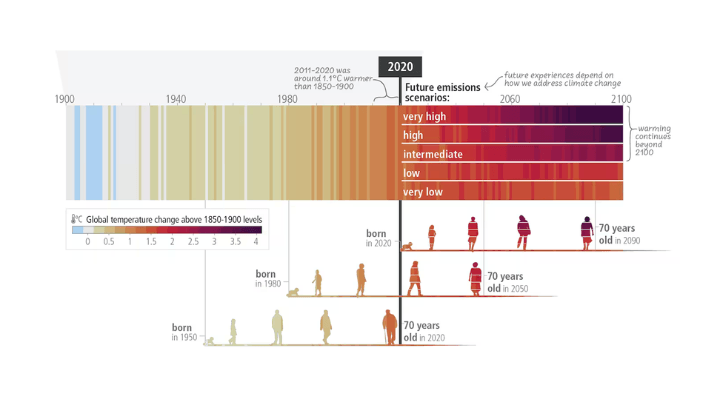The challenge we face
From the moment that Greta Thunberg stepped out in front of the Parliament of Sweden in 2018 holding a sign imploring ‘School Strike for Climate’, climate change – and the role of schools in the fight against it – have been centre stage.
Count your Carbon was created in response to the very real and urgent climate change challenges we face. Our ultimate goal is to support educational settings to reduce their carbon emissions by 50% by 2030, to limit global warming to 1.5 degrees.
But what does this mean, and why is 1.5 degrees important?
The global context – why 1.5 degrees?
Global efforts to tackle climate change are enshrined in policy and the recommended limit for global warming is 1.5 degrees above pre-industrial levels.
“The Paris Agreement adopted within the United Nations Framework Convention on Climate Change (UNFCC) in December 2015, commits all participating countries to hold “the increase in the global average temperature to well below 2°C above pre-industrial levels” and pursue efforts “to limit the temperature increase to 1.5°C”.
The Intergovernmental Panel on Climate Change (IPCC) is the United Nations’ body for assessing the science related to climate change. They use the science to report on the state of climate change; knowledge, impacts, risk and options for making reductions. According to the IPCC, exceeding 1.5 degrees of warming will have significant changes to our habitats, the way we live, and what we eat.
IPCC scenarios
The IPCC say that the extent to which current and future generations will experience a hotter and different world depends on choices now and in the near term. The chart below from the same report shows the increasing global average temperatures over the past, and five potential scenarios for heating in the future.
The best case scenario at the bottom is significantly hotter than our past, and requires that we halve global emissions by 50% by 2030 to have a 50% chance of capping heating at this level.

The harsh truth is that climate change is already having visible effects on our planet including heatwaves, floods, droughts, and fires.
The Earth is seeing rising temperatures, a shift in rainfall patterns and, at the opposite end of the scale, drought and associated wildfires. Sea levels are rising globally as glaciers and snow continue to melt.
Greenhouse gases in the atmosphere act to make the surface and our lower atmosphere warm because they absorb and emit heat energy in all directions.
Without this effect, life as we know it could not have evolved on our planet. But adding more greenhouse gases to the atmosphere makes it even more effective at preventing heat from escaping into space – and when the energy leaving is less than the energy entering, the planet warms.
Global heating will impact on the security of our food as floods, drought or fires put crop growth at risk. Many people will need to leave their homes as the impacts of climate change destroy people’s livelihoods and the areas they live in. Extreme temperatures put human health at risk and certain species at an increased risk of extinction.
UNICEF currently assesses that 1 billion children are at extremely high risk from the impacts of the climate crisis. At present, the intensity of global heating we will see depends on how quickly and how far we cut emissions of greenhouses gases.
But the good news is the sooner we cut emissions, the smaller the damage will be: every change that we have the power to make is critical.
The national context
It is clear that large scale change will not be achieved in isolation, but by the education sector moving as one. The Department for Education is rolling out a new strategy to support schools to take action – outlined in its policy paper Sustainability and climate change: a strategy for the education and children’s services systems.
By 2025, government is expecting all schools to have:
- A ‘Climate Action Plan’ outlining how you plan to work towards NetZero.
- A ‘Sustainability Lead’ – an individual or team of people who will implement actions to improve the sustainability of your school.

The local context
Many local authorities have declared climate emergencies, meaning action is needed within their estates (of which public schools, colleges and nurseries form a significant part.) Multi-academy trusts (MATs) are now expected to routinely report their scope one and two emissions as part of their ESG reporting.
Across a single setting, interventions such as lowering electricity use or boosting the energy efficiency of buildings can show a significant reduction in carbon emissions – and sometimes even in costs too.
But when many schools or multi-academy trusts make changes at the same time, our impact is amplified. By building carbon literacy amongst those working in education, and making changes to the physical buildings and services young people interact with each day, we nurture a more environmentally minded education eco-system.
It is our hope that educational establishments can lead by example, inspiring pupils, parents, colleagues and the wider community to take action to reduce emissions – including in their own homes or places of employment – and showcasing what can be achieved with a few changes.
